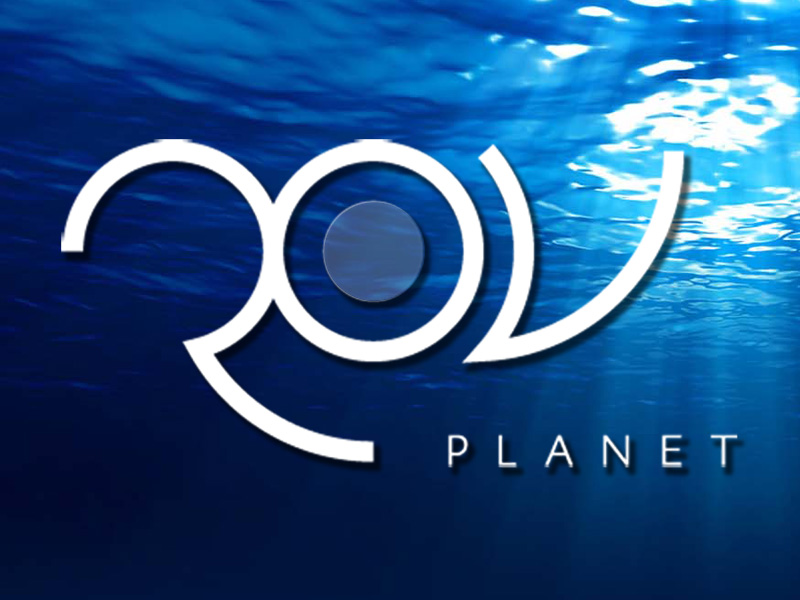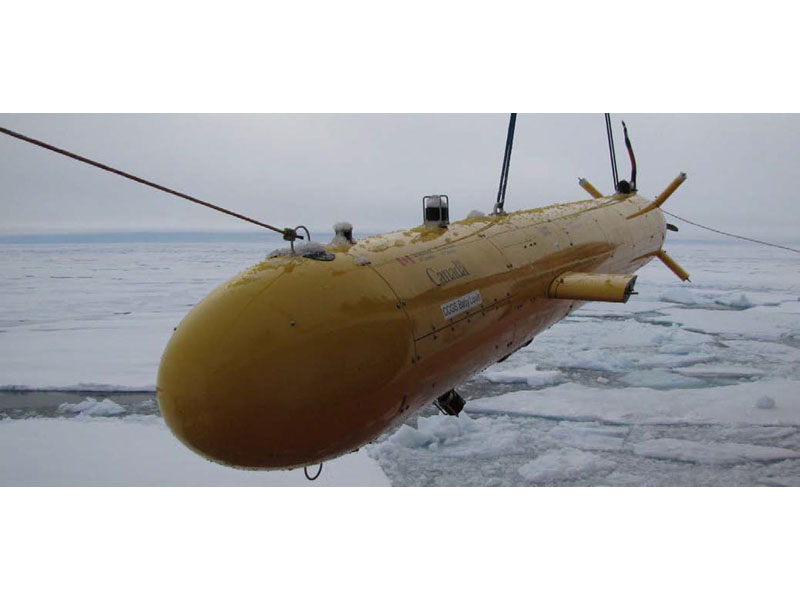
ROV Planet Articles
Articles for Tag or Tags: Search
Number of matching Articles: 145
Wood Group Engineers Support NSRI’s Diversification Initiative
09.05.2017
Two engineers from Wood Group have supported the National Subsea Research Initiative (NSRI) in its drive to speed up the development and implementation of near to market technologies in the subsea sector.
Jamie McCallum and Christer Fjellroth, who are both working towards becoming Chartered Engineers, beat off competition from a number of hopefuls who applied to join NSRI on a one year secondment last year.
Fishers Equipment Helps Locate Weapons and Explosives
03.05.2017
Before 1970 the widely accepted solution for disposal of old munitions, typically called unexploded ordnance (UXO), was to dump them into rivers, lakes and oceans. Today we know this creates a multitude of problems, the worst of which are pollution and the risk of an explosion. Many people have already lost their lives to these underwater booby traps. The uncertainties surrounding their precise location and degree of decomposition, makes attempting to recover these dangerous devices an even more difficult task.
Could ocean robots help decide if oil-rigs could become reefs?
19.04.2017
Today at Ocean Business, a project has been launched that aims to develop a guide for using ocean-robots to assess the impact of decommissioned oil structures on marine life.
This National Oceanography Centre (NOC)-led, joint science-industry project was launched by Dr Daniel Jones at a workshop in Ocean Business.
Decommissioned oil structures can have positive impacts, such as providing a habitat for marine life in a similar way to a reef, or negative consequences - such as marine pollution. In the North Sea, for example, structures are rapidly colonised and typically develop highly productive ecosystems that often include priority species, such as the cold-water coral Lophelia pertusa. On the other hand, large piles of oil-enriched sediments lie underneath many oil and gas installations. The environmental impacts of these piles are not well known, nor are the relative impacts of re-disturbing partially recovered systems while removing structures. Marine robots have great potential to investigate these impacts.
Government of Canada funding for Observatory Junction boxes
11.03.2017
It’s a go ahead for new design development and configuration for the established OceanWorks International observatory communication nodes, thanks to approved funding from The National Research Council of Canada Industrial Research Assistance Program (NRC-IRAP).
The OceanWorks Subsea Instrument Interface Modules (SIIM), or junction boxes originally were developed for the Ocean Networks Canada (ONC) Neptune and Venus observatories, where they have been in place since 2006. There is a total of 14 junction boxes that have been delivered to ONC for deployment on both Neptune and Venus. Three more junction boxes are being delivered to ONC for implementation this year, for a total of 17.
Unlocking Marginal Fields at Subsea Expo 2017
20.01.2017
With increasing pressure on the industry to find economically viable ways to develop marginal oil fields in the UK North Sea and further afield, NSRI (National Subsea Research Initiative) is looking to help the industry adopt a collaborative and integrated approach to exploit the potential of untapped ‘small pools’ (oil and gas reserves less than 50 million boe).
As the technology arm of Subsea UK, NSRI will be hosting a workshop at Subsea Expo 2017 on Thursday 2nd February to highlight the work that has been done to maximise economic recovery from small pool developments across the UKCS.
The event will welcome a host of industry experts to the stage to showcase their involvement and provide a platform to discuss the next steps, looking at what is required to unlock reserves that have previously been deemed uneconomic.
Forum ROV to support University of Limerick’s pioneering Renewables Projects
16.01.2017
Forum Energy Technologies, Inc. has won an order to supply the University of Limerick with a Remotely Operated Vehicle (ROV) to support its subsea inspection and intervention work on renewable energy infrastructure.
The University’s Mobile and Marine Robotics Research Centre (MMRRC) has purchased the Sub-Atlantic™ Comanche 2,000 metre Observation Class ROV and associated launch and recovery system for delivery in March 2017 under a MaREI Science Foundation Ireland infrastructure grant (15/RI/3232).
The Comanche was selected due to its high thrust to drag ratio enabling it to operate in strong waves, currents and winds – typical conditions for the offshore renewables industry. The system will be equipped to a high specification with precision positioning and navigation systems, camera and lighting systems and sonars
Nick Search to lead Rodger & Hartnolls from January 2017
09.01.2017
Rodger & Hartnolls, a leading business development consultancy providing sales and business development focused services in the Offshore, Subsea, Renewables and Technology markets is delighted to announce the appointment of Mr Nick Search as Partner and Managing Director with effect from 3rd January 2017. Nick, based in our South London office, will take full responsibility for the leadership and development of Rodger & Hartnolls global business activity.
Enabling APEX To Do More: Teledyne Webb Research Releases APF-11 Controller and Firmware
04.01.2017
Teledyne Webb Research announces release of the APF-11 controller and firmware as the new core of the well-known Autonomous Profiling Explorer (APEX). With nearly 8,000 floats deployed during the past 16 years, APEX has long been the workhorse of the hugely successful Argo Program monitoring temperature and salinity in the upper 2000 meters of the world’s oceans. Teledyne engineers designed the new controller and firmware to ensure APEX continues that role for years to come.
Unexplored Ocean Depths Bustling with Life, Despite Extreme Conditions
21.12.2016
Schmidt Ocean Institute’s new underwater vehicle SuBastian completes its first expedition discovering new hydrothermal vent sites and possible new species in the Mariana Back-Arc, an extreme deep-ocean environment.
APRA HARBOR, GUAM – A team of leading geologists, chemists, and biologists aboard research vessel Falkor have just finished surveying the largely unexplored Mariana Back-Arc for life at depths greater than 13,000 feet.
Dr. David Butterfield, JISAO, University of Washington, and Dr. William Chadwick, NOAA-PMEL and Oregon State University, led the group to the Back-Arc; returning for the second phase of a two-part exploration of the region.
In 2015, the team of scientists located new hydrothermal vents in the Back-Arc region, including evidence of recent lava flows. This year, the team returned to these vent systems with the new remotely operated vehicle (ROV), SuBastian, to characterize their water chemistry and biodiversity. The new results fill a gap in knowledge about the biogeography of these unique deep-sea ecosystems and has implications for how tectonic setting influences the composition of chemosynthetic animal communities worldwide.
JW Fishers Develop New Underwater Metal Detector
21.12.2016
JW Fishers Mfg., a company specializing in the design and manufacture of underwater search equipment for almost 50 years, is introducing a new underwater metal detector for 2017. The SAR-1 Search and Recovery metal detector was developed as a result of significant customer feedback and extensive product testing. This new detector was specially designed for use by public safety dive teams, law enforcement agencies and military units that need to locate metal objects in poor visibility underwater environments. The SAR-1 alterts the operator to the presence of metal by vibration which is transmitted through the handle. Even in zero visibility, the user can feel the intense vibration conducted through the detector’s handle and into the diver’s arm. In addition to vibration, the detector also has a high intensity LED display which is directly in front of the diver’s face and easy to see in all but the worst conditions.
Acoustic Beacons Aid Scientific Exploration and Research
09.11.2016
Two young engineers will soon be attempting a 250 kilometer crossing of the English channel in a pedal powered submarine. The two friends, Antoine Delafargue and Michael de Lagarde, are passionate about technical challenges, exploration, and sustainable management of natural resources. Their plan is to travel from Plymouth, England to Saint-Malo, France just a few meters above the sea floor in their human powered sub equipped with variety of observation instruments. The two pilots will provide propulsion through pedals attached to a crankshaft which is connected to a drive train that turns the sub’s propeller. The sealed hull is constructed of wood, fiberglass and a resin composite and has many of the features found on full a size submarine including ballast tanks, CO2 scrubbers, bow thrusters, and a sonar. The sub also has a number of safety features such as an emergency buoy and an acoustic pinger. The pinger will allow a surface vessel to track the sub throughout it’s journey.
First take off of unmanned aircraft scheduled from research vessel Falkor
13.10.2016
Research vessel Falkor leaves Darwin today to explore the poorly understood air-sea
interactions across the Indian and Pacific Ocean. This research is very important in understanding the ocean’s role in global climate change. The exchange of energy and matter between the atmosphere and the ocean are particularly onerous requirements, and have largely been neglected in climate research. Chief Scientist Dr. Oliver Wurl, from the University of Oldenburg and his international team of scientists from Germany, the United States, and United Kingdom plan to gain new insight during this 31-day expedition.
CONTRACT TO BUILD SIGNED BY UTAS FOR AUSTRALIA’S FIRST ISE EXPLORER AUV
15.09.2016
Port Coquitlam, BC – International Submarine Engineering Ltd is pleased to announce the signing of a Contract to Build a 5000 Meter Depth Explorer class Autonomous Underwater Vehicle (AUV) for the University of Tasmania (UTAS) and the Australian Research Council (ARC) Antarctic Gateway Partnership project.
Special low temperature power cables for Concordia research station on the Antarctic Plateau
08.09.2016
Novacavi recently applied its experience in engineering cables for extreme temperatures and environmental conditions in conceiving special low temperature power cables for Concordia Station, the permanent and all-year research station on the Antarctic Plateau.
This French-Italian research facility located on one of the coldest places on Earth needed a customized cable solution securely operating under freezing conditions ranging from -85°C in Winter to -25°C in Summer.
NSRI to Support Companies Get Their Technology Off the Ground
06.09.2016
The National Subsea Research Initiative (NSRI) is hosting its second annual Developers Day event on 15th September in a bid to further support companies to get their technology to market.
The session will feature a series of presentations outlining available resources and the support organisations which can provide assistance with research and development, tax, funding and patenting.
2G Robotics, NOAA, and OARS Collaborate to Document Historical American Shipwrecks
07.07.2016
2G Robotics recently collaborated with the National Oceanic and Atmospheric Administration (NOAA) at the Thunder Bay National Marine Sanctuary to document America’s maritime heritage. 2G Robotics and NOAA, with the assistance of Offshore Analysis & Research Solutions (OARS), used 2G Robotics’ underwater laser scanning technology to create 3D models of some of America’s most nationally significant shipwrecks.
NSRI to showcase UK’s academic expertise
11.06.2016
The National Subsea Research Initiative (NSRI) is bringing together academic experts from across the country to come up with a collaborative approach to unlocking the potential of small pools of hydrocarbons in the North Sea.
NSRI is hosting an event in Aberdeen on 22 June to highlight the expert skills that are housed in the UK’s top universities which will help recover 1-1.8 billion barrels of oil which currently cannot be exploited economically.
Universities, technology developers and the wider industry will come together to hear about the capability the UK academic community has to meet the challenges, and the developments which can ultimately help progress concepts through to infield implementation.
Scientists Explore Earth’s Newest Land Using Advanced, High-Resolution 3D Mapping
04.05.2016
SUVA, FIJI – Research vessel (R/V) Falkor will return to port today after 28 days at sea conducting pioneering studies including mapping the Earth’s newest island landscape in the Kingdom of Tonga (Southwestern Pacific).
NASA has partnered with Schmidt Ocean Institute and Columbia University to produce a high resolution submarine topographic map of the undersea portion of a volcano that first appeared in January 2015 as a result of a “surtseyan” style eruption involving the dynamic interaction of hot volcanic materials and sea water.




















